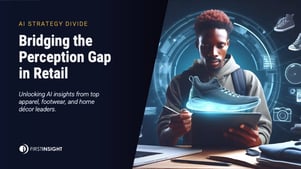Retail has never had more data, dashboards, and tools. Yet making a single decision often takes longer than ever. In an industry where consumer preferences can shift overnight, many retailers are still operating on decision cycles that span six to nine months. The lag between identifying a trend and getting a product to market can render even the most data-driven strategies obsolete before they are executed.
The central tension is not a lack of information but the speed of interpretation and action. Teams are inundated with data from countless sources, but the process of turning that data into confident, actionable insights remains slow and fragmented. Every day a decision waits for another meeting, another report, another spreadsheet, it loses value, and so does your margin. This delay is no longer just a cost of doing business; it is a direct threat to relevance and profitability.
The Slow Grind of Retail Decision-Making
The traditional retail workflow is a linear and often cumbersome process. It begins with a concept, moves through testing, buying, pricing, and marketing, and finally culminates with an in-store launch. Each stage requires consensus from multiple teams: merchants, planners, marketers, and finance–which inherently adds lag.
This prolonged timeline is compounded by several factors:
- Data Overload: Retail teams are drowning in dashboards and reports yet struggle to find the clarity needed to act decisively. Insights are trapped within disparate tools, and teams often find themselves waiting on analysts for answers to critical questions.
- Siloed Information: When data isn't shared seamlessly across departments, each team operates with an incomplete picture. This forces a cycle of re-validation and re-approval, as decisions made by one group must be checked against the data and assumptions of another.
- Reactive Analysis: Trend reports and social listening tools are valuable, but they primarily describe what has already happened. They offer a rearview mirror perspective when what retailers truly need is a forward-looking view to anticipate what customers will want next.
Even when teams recognize a shift in consumer demand, the system is not built for agility. As noted in recent industry analyses, typical trend-to-market windows can stretch from six to nine months, a timeframe in which customer preferences can, and often do, change completely.
Delayed Decisions = A High Cost
The inability to act swiftly carries significant financial and strategic consequences. The cost of delay isn't just a line item on a balance sheet; it manifests across the entire business in ways that erode competitive advantage and hinder growth.
Key costs include:
- Lost Relevance: By the time a new product inspired by a fleeting trend finally hits the shelves, the cultural moment has often passed. You’ve seen it happen: a style goes viral on social media in June, gets approved for product development by August, and finally reaches stores the following spring, long after customers have moved on to the next big thing.
- Increased Inventory Risk: Slowness breeds uncertainty. Without the confidence to act quickly on emerging trends, retailers risk over-investing in products that will ultimately miss the mark or under-buying the styles that could have been winners. This misalignment leads directly to inventory imbalances.
- Margin Erosion: The most direct consequence of poor inventory management is the inevitable wave of late-stage markdowns. When products fail to resonate with customers, retailers are forced to slash prices to clear stock, sacrificing profitability that could have been protected with earlier, more accurate decisions.
The Real Problem Isn't Data, It's Time
For years, the prevailing wisdom in retail has been to accumulate more data. But the core problem facing retailers today is not a deficit of insight; it is a deficit of instant access to insight. The information needed to make smarter decisions often already exists within the organization, but it is locked away in complex systems that require manual interpretation.
This manual analysis creates a critical lag between a signal and a decision. By the time an analyst has gathered the data, built the model, and presented the findings, the opportunity window has often already begun to close. The future of retail growth will not be defined by the volume of data a company collects, but by the speed at which it can ask a question, see the answer, and act on it—all in the same moment.
The Turning Point is Here
The next evolution in retail technology must focus on eliminating the friction between questions and answers. Imagine a world where decision-making no longer needs to take weeks or months. What if your teams could get predictive, data-backed responses to their most pressing strategic questions instantly?
The tools that will define the next era of retail will be conversational, predictive, and immediate. They will empower teams to move with a speed and confidence that is currently unattainable, turning insights into action before the opportunity is lost.
We’re introducing Ellis: the AI solution that transforms retail decisions into instant answers.
Ready to see it in action? Book a complimentary 30-minute call below.

















